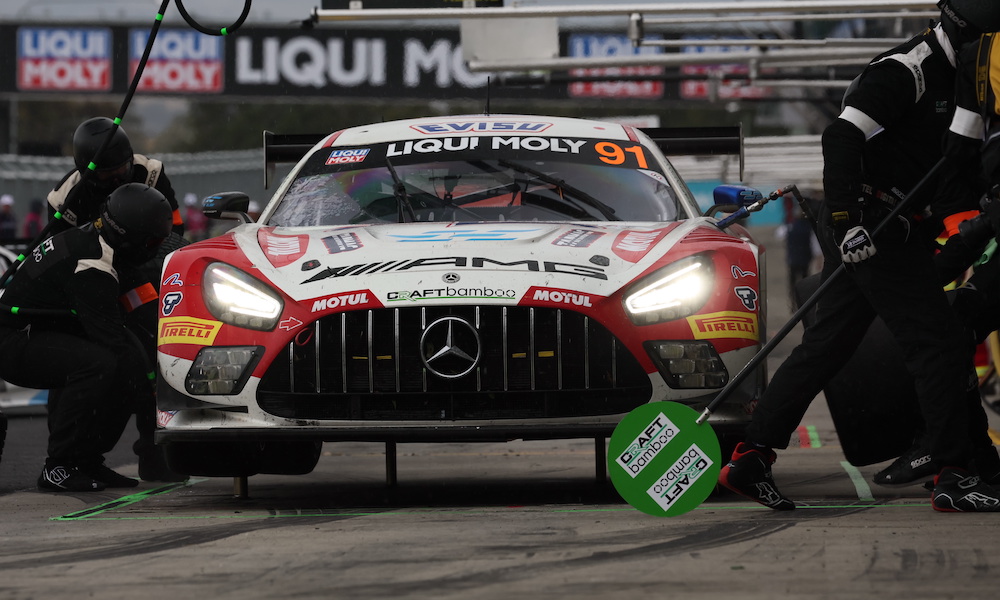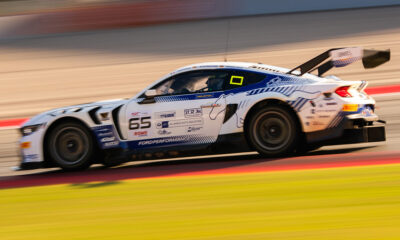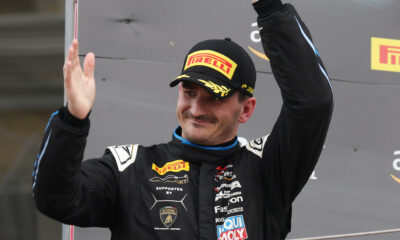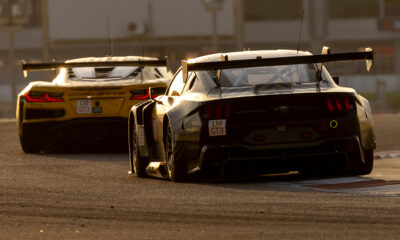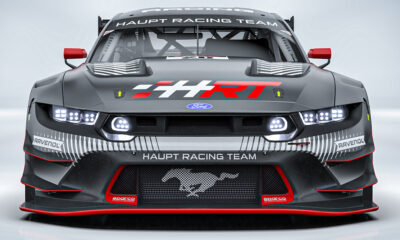Craft-Bamboo Racing director Darryl O’Young said that some people thought his team was “crazy” to carry out a radical pit stop strategy in the first half of the Liqui-Moly Bathurst 12 Hour.
The No. 91 Mercedes-AMG GT3 Evo that started from the back row of the grid and finished second in the hands of Maro Engel, Daniel Juncadella and Kevin Tse carried out 14 pit stops in the opening half, in a format where full GT3 stints typically last an hour.
The team regularly went off-sequence, pitting during and immediately after safety cars, in a bid to complete the requirement for nine compulsory stops (CPS) lasting 120 seconds from pit entry to exit.
The CPS rule was introduced to the Bathurst 12H rulebook this year, and Craft-Bamboo worked thoroughly in the build-up to see how it could make the most of the regulation.
There was no limit on when the CPS quota could be fulfilled, leaving the No. 91 car in a situation where it was coming in much more frequently than its competitors.
It was the first team to complete its allocation, doing so during the fourth hour.
This gave it the freedom to complete pit stops in as much time as it could in the remaining eight hours, giving it much more leeway than its rivals.
“There are very clear regulations outlined for the new format this year,” O’Young told Sportscar365.
“It took a lot of analysis from the engineers, strategy team and drivers contributing to meetings early in the week, discussing the regulations and finding ways that we could gain from what’s written there.
“There were a lot of rules that were quite clear. It took a lot of creativity because there was some risk.
“When you talk it out, it sounds all good, but when you pull the trigger and do a pit stop under green flag, it took some courage I think.
“But overall it was very calculated and it worked out exactly how we planned it. Most people thought we were crazy!”
O’Young explained that Craft-Bamboo utilized safety car procedures to remain on the lead lap despite coming into the pits so often.
For instance, when it performed a CPS immediately after a safety car restart, the 120-second pit lane delta was quicker than the amount of time it took for the field to complete a lap, particularly in wet conditions.
“It’s not easy to understand, but there are lots of procedures and different things that occur, based on where other cars are based,” O’Young said.
“We never took the main wave-by. It was more just the timing of our stops and safety cars, and how long a lap takes. It was quite complex. We worked a lot to get there.”
Craft-Bamboo moved into the lead of the race after four hours with Juncadella behind the wheel, once its CPS allocation had been completed.
The Spaniard ran out front for a stint before handing over to Tse, who cycled out for Engel before returning to the wheel in hour nine when rainfall returned over Mount Panorama.
O’Young reckoned the time loss during Tse’s stint in tricky conditions, going up against AMG factory driver Luca Stolz in the SunEnergy1 Racing Mercedes, was crucial in putting Craft-Bamboo on the back foot compared to the eventual winning car.
With three hours to go, Craft-Bamboo was around 16 seconds behind SunEnergy1.
Despite making a much quicker final stop, it was unable to fully erase the gap as Mercedes-AMG aces Gounon and Engel canceled each other out with extremely similar and consistent lap times.
“I think the weather [influenced] how things played out at the end; it just didn’t give us that perfect strategy to be in that position,” O’Young suggested.
“I think if our Bronze was able to get in the car one stint earlier, we would have been fine.
“It’s just how the risk versus reward thing worked out: do you put your Bronze out in the difficult conditions? That was a thing we took into consideration.
“It all affected the strategy at the end. It went green for most parts of the last few hours, and there was not much chance to recover from that.”
Craft-Bamboo Surprised Others Didn’t Follow
O’Young suggested that the first-half strategy worked “pretty much” as planned, with the only blemish being a first pit stop that narrowly went under 120 seconds, meaning that it couldn’t count as a CPS.
“That was mainly because we didn’t get any practice, so we kind of estimated that CPS,” he said.
“We could have had an even bigger advantage.
Asked if he was surprised that other teams did not deploy a similar strategy, O’Young replied: “I was, actually. I was expecting the Audis to pull some strategy in that direction.
“I thought maybe one of the car crews would have thought of it. It was our own team strategy.”
Craft-Bamboo driver Juncadella, who was making his Bathurst 12H debut, echoed O’Young’s assessment that the aggressive strategy left some people perplexed.
“It was our strategy since Friday and I’m very surprised that we fooled everyone with that, because nobody really thought about it,” he said.
“I had my parents and friends back at home, writing to me, ‘what the hell are you guys doing? This looks really shit!’ So apparently, they knew better from home!
“But we did what we had to do, and we were standing out front. It was great to see.”


